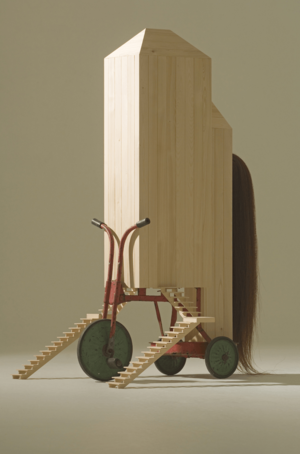Greer Honeywill facts for kids
Greer Honeywill (born in 1945 in Adelaide, South Australia) is an Australian artist. She creates art that makes you think. Her work often uses sculptures, tells stories about her life, and explores new ideas.
Contents
Early Life and Education
Greer Honeywill's father, Donald Desmond Spooner, was a classical pianist. He also taught himself to paint realistic pictures. He showed his art often and won an award called the Maude Vizard-Wholohan Prize in 1955.
Greer Honeywill studied art at the South Australian School of Art. She became an art teacher in 1964. Later, she studied drama. In 2003, she earned a PhD in Fine Art from Monash University. She won an award for being an excellent student.
In 2015, she earned a second PhD from the University of Tasmania. Her research was called The Ever Present Eye.
Creative Beginnings
Between 1963 and 1976, Greer Honeywill worked as a stage designer in Adelaide. She designed sets for plays like Eureka Stockade and Jumpers. These were part of the Adelaide Fringe Festival.
In 1974, she helped start the Come Out Festival. This festival was for young people. Between 1974 and 1981, she created and directed six big shows. Two of her shows, Pageant (1977) and Perambulations Games (1979), were shown on ABC TV. Her show The Arts Circus (1979) was also very popular.
One of her unique projects was The Human Chess Tournament (1975). In this show, real people acted as chess pieces. They moved around a giant chessboard. A composer created music that changed with the chess moves. This was the first time a non-music event was held in the Adelaide Festival Centre amphitheatre.
In 1976, the Adelaide Festival asked her to create Super Scrabble. This was another large-scale game played in the amphitheatre.
Artistic Work and Research
Greer Honeywill moved to Melbourne in 1990. She shared a studio with other artists. During this time, she worked on a big project called The Great Australian Dream Exhibition. This show was displayed in Melbourne in 1995.
In 1998, she went back to university to do more research. Her PhD looked at how people interact. She studied social patterns and childhood memories. Her work combined academic research with personal stories. A professor described her work as a mix of research, history, and art.
Since 2003, Greer Honeywill has created many different types of art. She has made large outdoor sculptures. She also creates smaller objects and wall art with text. Her art often uses repeating shapes and ideas. This helps people understand how history and society affect us.
In 2010, she moved to Tasmania. She earned her second PhD there in 2015. She returned to Melbourne in 2016, where she lives now.
Awards and Recognition
Greer Honeywill has received many awards for her art:
- 2000 Allport Writing Award
- 2002 Coates and Wood Foundry Prize
- 2002 Monash University, Doctoral Completion Scholarship
- 2003 Yering Station Sculpture Prize
- 2003 World Sculpture News Prize
- 2003 Mollie Holman Academic Medal, Monash University
- 2005 Invited installation artist, Castlemaine State Festival
- 2006 Arts Victoria, Arts Development Grant
- 2008 Mitchell Family Award (Montalto Sculpture Prize)
- 2008 Inaugural artist in residence, Carr Design Group, Melbourne
- 2009 Sunshine Coast Art Prize, Commended Award


